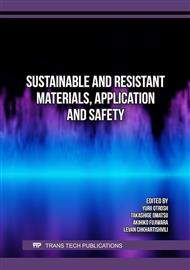p.3
p.9
p.15
p.23
p.33
p.41
p.49
p.61
p.67
Modeling the Thermal Effects of Fire on Steel-Reinforced Concrete Slabs with a Corrugated Profile
Abstract:
The aim of the work was to determine the possibility of not taking into account the orientation (vertical or horizontal) of the studied elements of steel-reinforced concrete slabs with a corrugated profile during their heating in a modular small-sized fire furnace. The work investigated the temperature distributions on the outer surface of the corrugated ceiling profile of a steel-reinforced concrete slab of horizontal orientation simulated in the fire furnace chamber. To create geometric models of the fire furnace chamber and the studied element, a CAD software complex was used. To solve the heat engineering problem, mathematical (numerical) methods were used, based on solving systems of differential equations of continuous media such as the Navier-Stokes equation and the Fourier heat conductivity equation. According to the results obtained, the temperature distribution on the outer surface of the steel profile of the reinforced concrete slab is uniform, the temperature deviation in different places on the surface does not exceed 7 %. The maximum temperature on the heating surface of the steel profile of the reinforced concrete slab in the last minute of computer simulation reached 921 °С and the average temperature at this time over the entire surface of the structure was 917 °С. To determine the appropriate orientation of the test sample during fire tests, a comparison of the obtained temperature distributions on the outer surface of the corrugated profile of a horizontally placed reinforced concrete slab with the temperature distributions on the outer surface of the corrugated profile of a vertically placed reinforced concrete slab, which were given in the previous work was made. Analysis of the average surface temperatures of the corrugated profile of a reinforced concrete slab of horizontal and vertical orientation showed that the temperature distribution over the surface of the profile was uniform in both cases and the results obtained show good reproducibility of the experiment during computer simulation. And the orientation of the tested elements does not affect the temperature distribution over the outer surface of the corrugated profile of a reinforced concrete slab in the simulated furnace.
Info:
Periodical:
Pages:
33-40
Citation:
Online since:
October 2025
Keywords:
Price:
Сopyright:
© 2025 Trans Tech Publications Ltd. All Rights Reserved
Share:
Citation:


